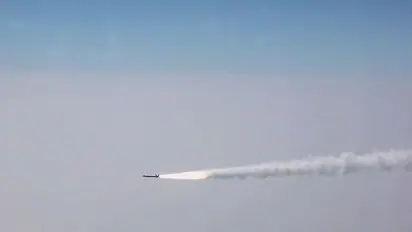India successfully tests RudraM-II air-to-surface missile from Sukhoi-30 MKI off Odisha coast

Synopsis
India on Wednesday accomplished a successful test of the RudraM-II air-to-surface missile from the Indian Air Force's Sukhoi-30 MKI fighter aircraft off the Odisha coast.
New Delhi: India on Wednesday accomplished a successful test of the RudraM-II air-to-surface missile from the Indian Air Force's Sukhoi-30 MKI fighter aircraft off the Odisha coast.
Conducted by the Defence Research & Development Organisation (DRDO), the trial confirmed the effectiveness of the missile system, boasting a range of 350 km. It successfully met all trial objectives, validating both the propulsion system and the control and guidance algorithm.
“The performance of the missile has been validated from the flight data captured by range tracking instruments like electro-optical systems, radar and telemetry stations deployed by Integrated Test Range, Chandipur at various locations, including the on-board ship,” the ministry of defence said on Tuesday.
In 2023 as well, the RudraM-II underwent a successful test.
Know about RudraM-II missile system:
The RudraM-II is an indigenously-developed solid-propelled air-launched missile system designed for the Air-to-Surface role, capable of neutralizing various types of enemy assets. Incorporating several state-of-the-art indigenous technologies from various DRDO laboratories, it stands as a testament to India's technological prowess.
Belonging to the Rudram family, it marks India's first anti-radiation missile, capable of neutralizing enemy ground-based radars and communication equipment. Equipped with an Imaging Infrared (IIR) seeker and passive homing head (PHH), it can effectively target airstrips, bunkers, and aircraft hangars.
With a payload capacity of 200 kilograms and a top speed of Mach 5.5, the RudraM-II can be launched from altitudes ranging from 3 to 15 kilometers. Its predecessor, RudraM-I, demonstrated precise targeting of radiation targets during its test in October 2020.
Reports suggest that the RudraM-II can be deployed from both Su-30s and Mirage-2000s, promising to significantly enhance air superiority and tactical capability for the Indian Air Force upon induction.
Defence Minister Rajnath Singh extended congratulations to DRDO, IAF, and the industry for the successful test-flight of RudraM-II, emphasizing its role as a force multiplier for the Armed Forces. Secretary of the Department of Defence R&D and Chairman of DRDO, Dr. Samir V Kamat, lauded the tireless efforts of the DRDO team, culminating in the successful flight test.
Stay updated with the Breaking News Today and Latest News from across India and around the world. Get real-time updates, in-depth analysis, and comprehensive coverage of India News, World News, Indian Defence News, Kerala News, and Karnataka News. From politics to current affairs, follow every major story as it unfolds. Download the Asianet News Official App to stay informed anytime, anywhere.